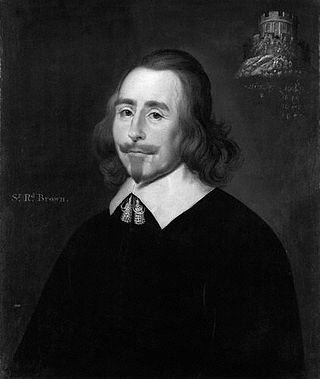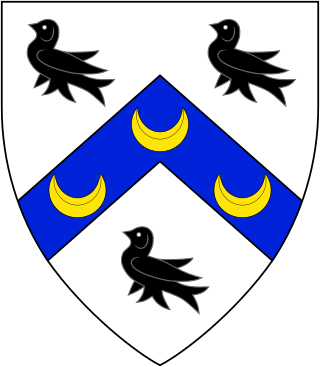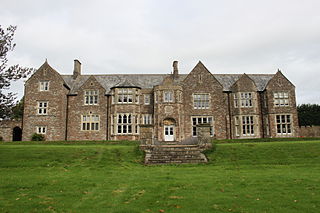
Marquess of Zetland is a title in the Peerage of the United Kingdom. It was created on 22 August 1892 for the former Lord Lieutenant of Ireland, Lawrence Dundas, 3rd Earl of Zetland. Zetland is an archaic form of Shetland. The Dundas family descends from the wealthy Scottish businessman and Member of Parliament, Lawrence Dundas. In 1762 he was created a Baronet, of Kerse in the County of Linlithgow, in the Baronetage of Great Britain. The title was created with remainder, failing heirs male of his own, to his brother Thomas Dundas and the heirs male of his body. He was succeeded by his son, the second Baronet. He represented Richmond and Stirling in the House of Commons and also served as Lord Lieutenant of Orkney and Shetland. In 1794 he was created Baron Dundas, of Aske in the North Riding of the County of York, in the Peerage of Great Britain. Lord Dundas notably purchased the right to the earldom of Orkney and lordship of Zetland from James Douglas, 14th Earl of Morton.

Robert Offley Ashburton Crewe-Milnes, 1st Marquess of Crewe,, known as The Honourable Robert Milnes from 1863 to 1885, The Lord Houghton from 1885 to 1895 and as The Earl of Crewe from 1895 to 1911, was a British Liberal politician, statesman and writer.

Marquess Townshend is a title in the Peerage of Great Britain held by the Townshend family of Raynham Hall in Norfolk. The title was created in 1787 for George Townshend, 4th Viscount Townshend.
Baron Rathcavan, of The Braid in the County of Antrim, is a title in the Peerage of the United Kingdom. It was created on 11 February 1953 for the Unionist politician Sir Hugh O'Neill, 1st Baronet. He had already been created a Baronet, of Cleggan in the County of Antrim, on 17 June 1929. O'Neill was the third son of Edward O'Neill, 2nd Baron O'Neill and the uncle of the Prime Minister of Northern Ireland Terence O'Neill, Baron O'Neill of the Maine. Lord Rathcavan was also a male-line descendant of Edward Chichester, 1st Viscount Chichester. He was succeeded by his eldest surviving son, the second Baron. He succeeded his father as Unionist Member of Parliament for Antrim in 1952, a seat he held until 1959, and was later a member of the Parliament of Northern Ireland. As of 2014 the titles are held by his son, the third Baron, who succeeded in 1994.

Marquess of Crewe was a title in the Peerage of the United Kingdom. It was created in 1911 for the Liberal statesman Robert Crewe-Milnes, 1st Earl of Crewe. He had already been created Earl of Crewe, of Crewe, Cheshire, in 1895, and was made Earl of Madeley, in Staffordshire, at the same time as he was granted the marquessate. These titles were also in the Peerage of the United Kingdom. Lord Crewe was the only son of the noted Victorian literary personage Richard Monckton Milnes. The latter had been raised to the Peerage of the United Kingdom as Baron Houghton, of Great Houghton in the West Riding of Yorkshire, in 1863. Lord Houghton married the Honourable Annabella Crewe, daughter of John Crewe, 2nd Baron Crewe. Their son, the second Baron, succeeded to the Crewe estates on the death of his maternal uncle Hungerford Crewe, 3rd Baron Crewe, in 1894. Lord Crewe's two sons both predeceased him and the titles became extinct on his death in 1945.

There have been ten baronetcies created for persons with the surname Browne, six in the Baronetage of Great Britain, three in the Baronetage of Ireland and one in the Baronetage of Nova Scotia. Only one creation is extant as of 2010. Three of the creations were for members of the Browne family headed by the Viscount Montagu.

The Wigram Baronetcy, of Walthamstow House in the County of Essex, is a title in the Baronetage of the United Kingdom. It was created on 30 October 1805 for Robert Wigram, a successful shipbuilding merchant and politician, representing Fowey and Wexford Borough in the House of Commons. The second Baronet also represented Wexford Borough in Parliament. He assumed in 1832 by Royal licence the surname of Fitzwygram. The fourth Baronet was a Lieutenant-General in the army and sat as a Conservative Member of Parliament for South Hampshire and Fareham.

There have been three baronetcies created for persons with the surname Chichester, one in the Baronetage of England and two in the Baronetage of the United Kingdom. Only the 1641 creation is extant.

There have been four baronetcies created for persons with the surname Hope, three in the Baronetage of Nova Scotia and one in the Baronetage of the United Kingdom. As of 2010 one creation is extant, one dormant and two extinct.
The Coates Baronetcy, of Haypark in the City of Belfast, is a title in the Baronetage of the United Kingdom. It was created on 15 July 1921 for William Coates. He was a senior partner of William F. Coates & Co, stockbrokers, of Belfast, Lord Mayor of Belfast in 1920, 1921, 1922, 1929 and 1930 and a member of the Senate of Northern Ireland. He was succeeded by his son, the second Baronet. He was a brigadier in the Royal Tank Regiment. As of 2014 the title is held by his son, the third Baronet, who succeeded in 1994.
There have been three baronetcies created for persons with the surname Denny, one in the Baronetage of England, one in the Baronetage of Ireland and one in the Baronetage of the United Kingdom. As of 2014 two of the creations are extant.

There have been seven baronetcies created for persons with the surname Watson, one in the Baronetage of England, one in the Baronetage of Great Britain and five in the Baronetage of the United Kingdom. One creation is extant as of 2016.
The Floyd Baronetcy is a title in the Baronetage of the United Kingdom. It was created on 30 March 1816 for General John Floyd. He was second-in-command at the Battle of Seringapatam in 1799. Floyd's daughter Julia was the wife of Prime Minister Sir Robert Peel, 2nd Baronet. The fifth Baronet was a Brigadier in the 15th/19th Hussars and was Chief-of-Staff of the Eighth Army from 1944 to 1945. Between 1961 and 1968 he served as Lord-Lieutenant of Buckinghamshire. The seventh Baronet was High Sheriff of Rutland in 1968. The fourth baronet's youngest son, Charles Murray Floyd, was a prominent businessman, surveyor and land agent.

Sir Henry Strachey, 1st Baronet was a British civil servant and politician who sat in the House of Commons for 39 years from 1768 to 1807.
There have been four baronetcies created for members of the Thorold family of Lincolnshire, two in the Baronetage of England and two in the Baronetage of Great Britain. As of 2014 one creation is extant.

There have been five baronetcies created for persons with the surname Kennedy, one in the Baronetage of Ireland, three in the Baronetage of Nova Scotia and one in the Baronetage of the United Kingdom. One creation is extant as of 2010.

The Milnes baronetcy, of Gauley in the County of Leicester, was a title in the Baronetage of the United Kingdom. It was created on 21 March 1801 for the colonial governor Robert Milnes. The title became extinct on the death of the invalid second Baronet in 1839, the only surviving son, "after many years in delicate and precarious health" residing at Sydling.

Brooks's is a gentlemen's club in St James's Street, London. It is one of the oldest and most exclusive gentlemen's clubs in the world.
Coates is an English and Scottish surname.
Sir Frederick Ulric Graham, 3rd Baronet DL JP was a British landowner, diplomat and traveller.











